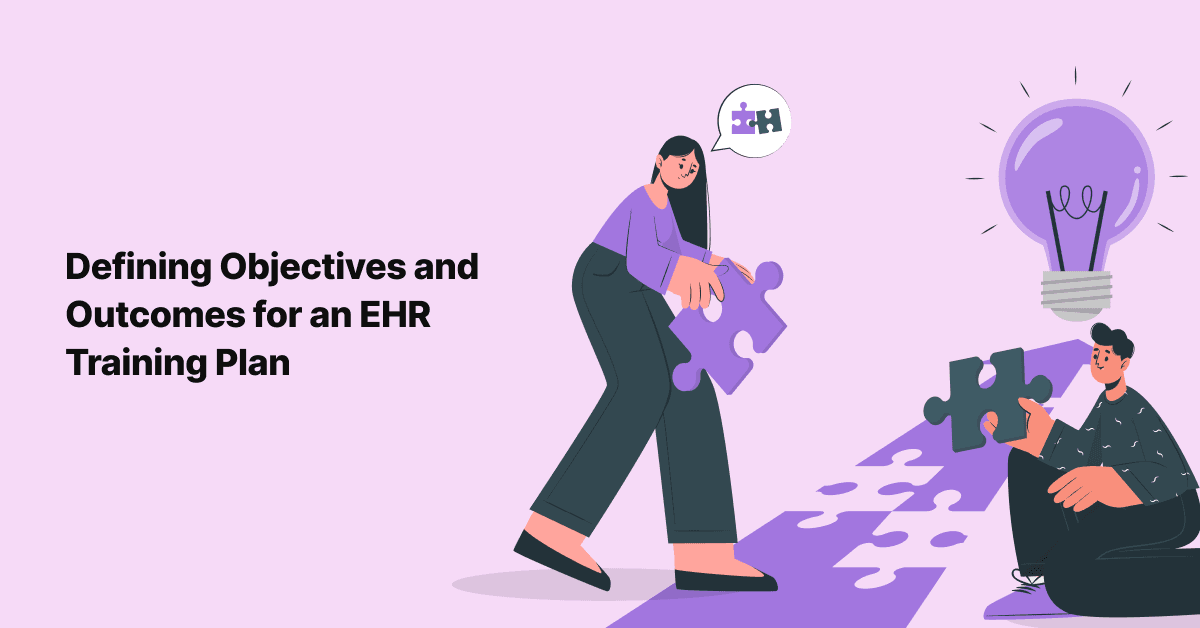
How to Schedule, Measure Effectiveness and Collect Feedback on EHR Training?
One of the most challenging aspects of EHR training is learning and retaining information. However, it should …

With the latest moves to more “forgiving” training technologies and adaptations, e-learning for healthcare has increased, not only in frequency but also in volume. Many organizations are looking to current repositories and training strategies to help move content from the classroom to a more autonomous platform, such as Healthcare Learning Management Systems, to host and disseminate more content outside of the already scheduled regulatory training programs.
In many cases, companies leverage their training content in unique ways to cater to a remote workforce. After all, training requirements still exist regardless of our current pandemic response. New hires must attend orientation, take compliance and sexual harassment training, and more focused development programs such as leadership development or even a course on using Outlook. The need is there and has rapidly increased over the last year.
As a result of moving out of the classroom and taking a more remote approach, content is more often than not simply transferred into a different learning space. Expecting similar results, training departments find themselves frustrated over lackluster performance and mass disconnect related to content retention and practical application. What is happening? The answer to this question is not so simple. Many variables exist when it comes to tracking performance. However, experience shows much of this disconnect relates to the way content is leveraged.
Think about the last time you sat in a traditional classroom. While many of these experiences vary, most carry the same set of attributes. Most (if not all) Instructor-Led Training have a:
Now, remove the in-person classroom elements, and you will be left with a PowerPoint presentation that serves as the base of the content, possibly a participant guide, and potential job aids or tip sheets. Now that most of us work remotely, training departments take the leftover elements and drop them into their LMS for healthcare. The learning administrators then take the PowerPoint presentation and associated reference materials and create a course to assign to the masses. Then, they move on to the next class or course. Rinse and repeat. Emails are sent out, and before you know it, you believe you have e-learning! The reality is, you do not, and your e-learning health is in bad shape.
You take a seat at your desk on a fine Monday morning, ready to take on the day. As part of your morning ritual, you open your email and browse through, paying attention to corporate communications. You notice the email sent out by the training department stating that training has changed. Instead of attending the compliance training class in the training room at the corporate headquarters, you will now take an e-learning course. What a great opportunity! Not only will you save time by not having to travel, but you can also sit in the comfort of your own home office and complete the same task! You click the link, and the training pops up on the screen. Suddenly, disappointment ensues as you view Slide 1 of a PowerPoint Presentation.
You click the next arrow to move to the next slide, and it reveals a bulleted list of information; on the next slide, more bullet points, maybe a graph here, or an oddly placed graphic there. Slide after slide, you’re given raw data. Frustrated and now disinterested, you click the “x” and close out the program. You have just become one more casualty of yet another boring presentation posted online and coined “e-learning.”
People remember things that stand out, and boring presentations just can’t perform as well online as a strategically developed e-learning course. What was it about the in-person class that you find yourself remembering? The trainer? Classmates? Maybe even the context, information that connects critical learning points? All of that is missing in the online PowerPoint presentation, resulting in our lackluster learning experience. Takeaways? Zero. People won’t remember the content, nor will they be motivated to experience your next course offering. That will eliminate any positive learning culture you had.
Quality e-learning is strategic. It’s developed specifically with the distance learner in mind. Content can be provided in various ways given the technology available. Even from a low-budget standpoint, the simple idea of learner experience plays a vital role within any platform used, even PowerPoint (notice we didn’t say presentation). It’s all about the learning approach.
Stay tuned for the next part of this blog series where we provide strategic solutions for this problem!
Join over 3,200 subscribers and keep up-to-date with the latest innovations & best practices in Healthcare IT.

One of the most challenging aspects of EHR training is learning and retaining information. However, it should …

Do you find yourself in a whole new era of learning? What you were accustomed to has changed. The whole …

In healthcare, your EHR system is your compass, guiding high-stakes decisions. EHR training acts as your …